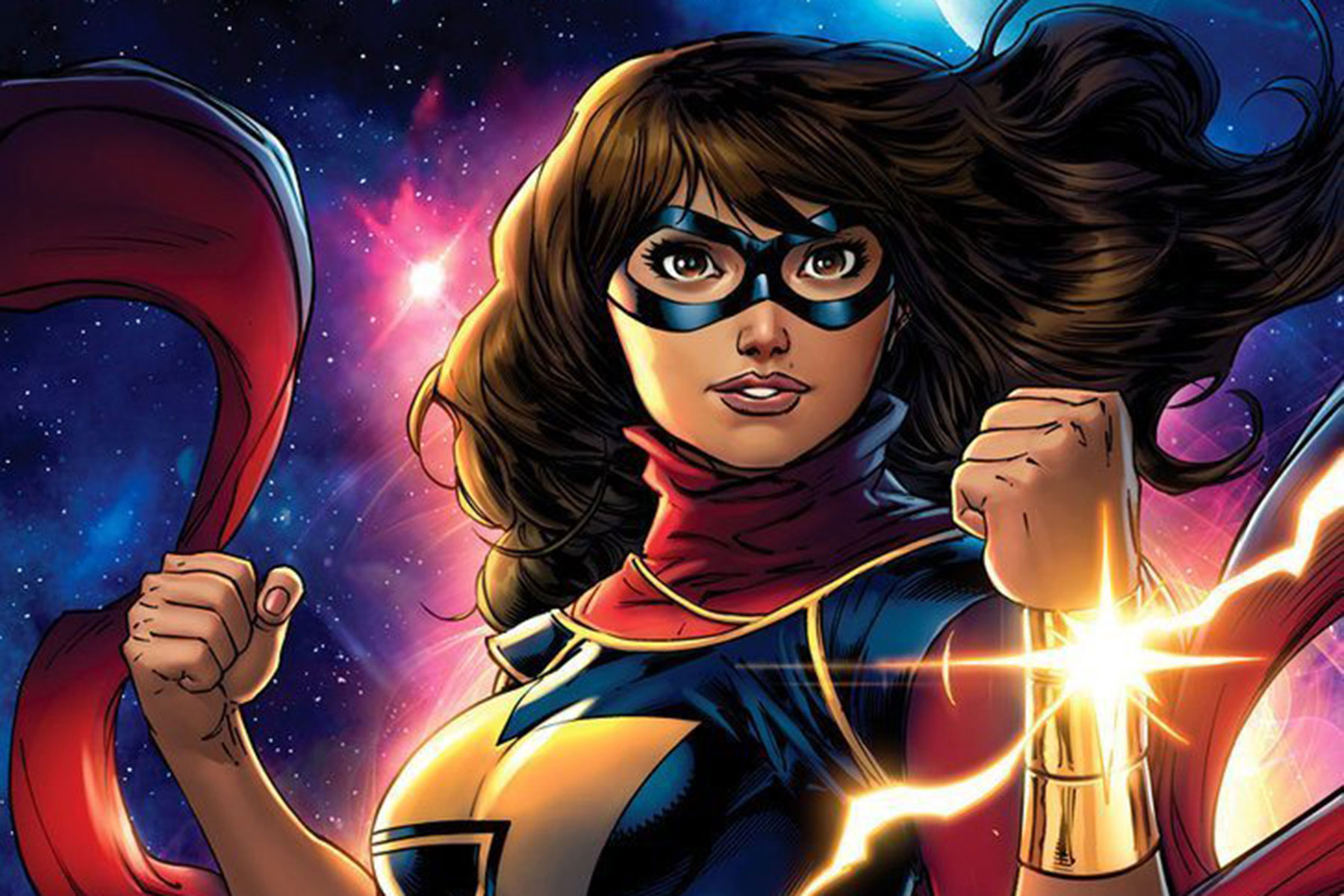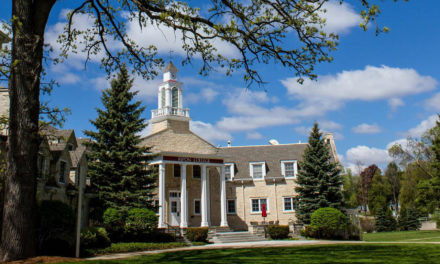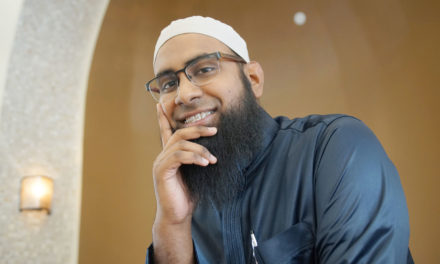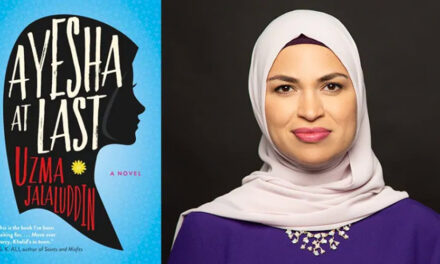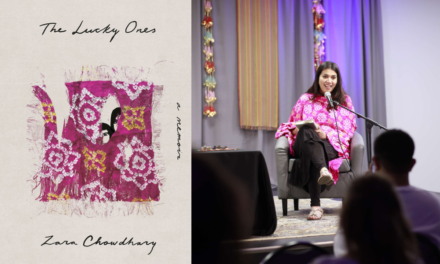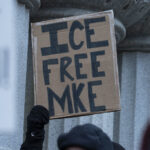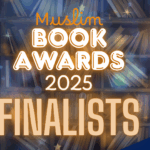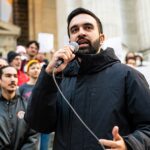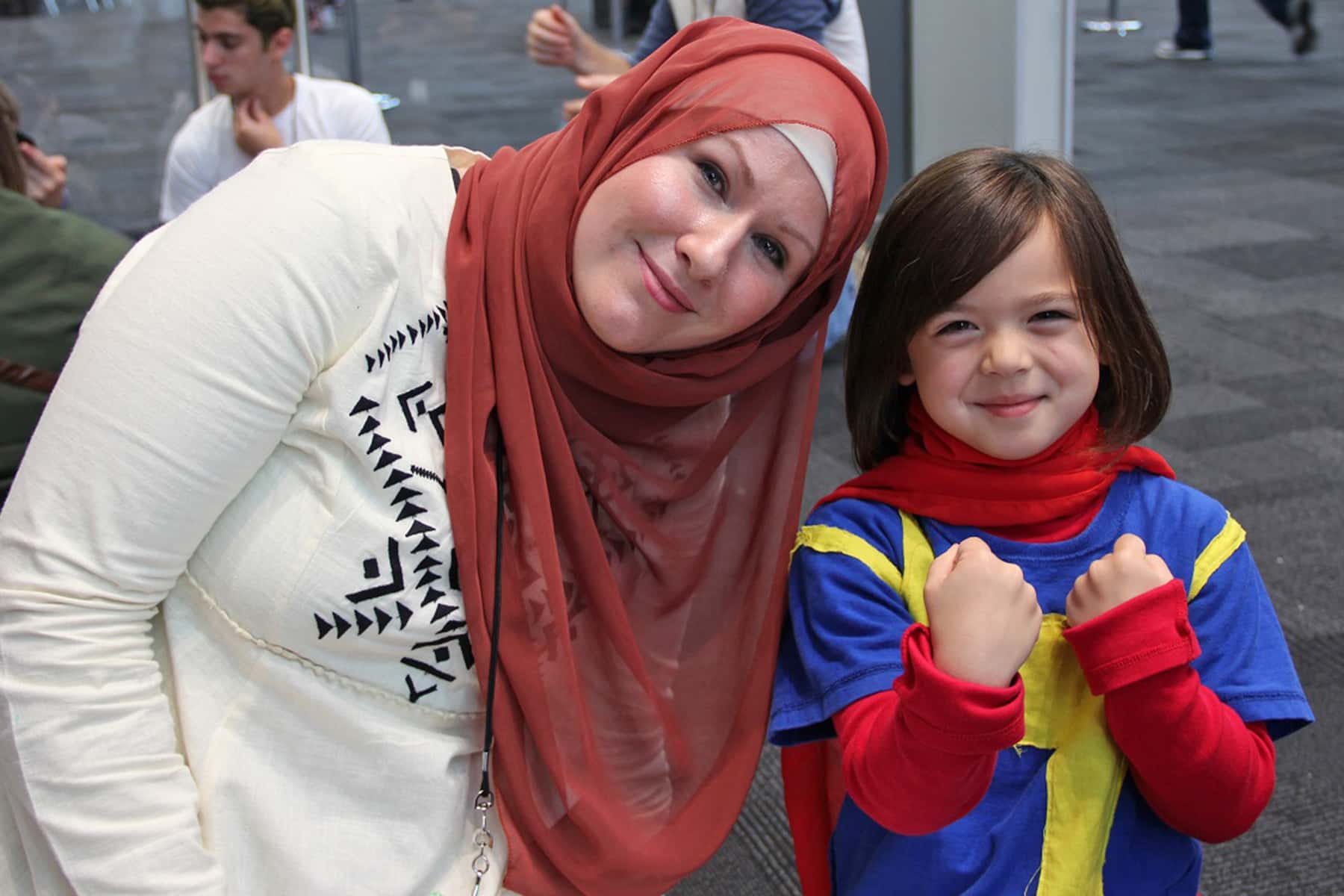
One of the most exciting comic books on the shelves right now has a very unusual hero at its center: Kamala Khan, a 16-year-old Muslim and Pakistani-American who discovers she has incredible shape-shifting abilities and who struggles with her identity on numerous levels.
Her book, Ms. Marvel, is written by G. Willow Wilson, a novelist and comic book creator who converted to Islam at the age of 20 after growing up in a secular household. Wilson’s award-winning debut novel, Alif the Unseen, fused cyberpunk and Islamic mysticism, while her debut graphic novel Cairo explored the stories of six characters in Egypt.
Ms. Marvel has made headlines, particularly at a time of growing Islamophobia, by offering readers a Muslim heroine who struggles — when she’s not saving the world — with issues of faith, family and where she fits in. We talked to Wilson about how she created Kamala Khan, the role religion can play in social justice, and what diversity really means.
Q&A with G. Willow Wilson
There was a controversy recently when someone at Marvel Comics suggested that adding diversity to comics might be hurting the bottom line. You wrote a really thoughtful post afterwards that examined the way we talk about diversity, and why it’s more useful to discuss it as realism.
What I think David Gabriel, who I know and like a lot, was trying to say was not that diversity is killing sales, but that there is a segment of the comic book reading population that has been very vocal about not wanting to change anything and very attached to whatever stories about superheroes and versions of superheroes they grew up with. That segment of the population does exist and they are very vocal, though it’s a matter of debate whether or not them withholding their money from Marvel due to increasing diversity is hurting sales. That’s not something I think we can determine yet.
I think diversity has become this catch-all word that is used by a lot of different groups in different ways, not all of them positive and not all of them furthering the cause of good comics. For some people in the more conservative segment of the comic book population, diversity has become sort of a dog whistle. But I’ve also heard very valid critiques of it on the left, that diversity by itself does not change the underlying structures that lead to inequality, so just having photo op diversity doesn’t actually change things. But stories that focus on authenticity and specific experiences can be very successful because it’s not about box checking. It’s about reflecting — as closely as you can in pulp fiction — a real lived experience. Because the things that makes us different are not just cosmetic. They change how we experience the world in some pretty critical ways. The stories that have done that well have really found solid fanbases. And some that do it less well. But when those stories fail, it inevitably becomes about the diversity issue when the real cause may be diversity done poorly. Or it may just be that like 90% of books, it simply fails and we don’t tend to think as hard about the mainstream same-old stories when they fail. There’s sort of a selective reading of the reasons why books, diverse or not, fail.
Are you seeing a shift in comic book publishers hiring more inclusive staff?
It’s been a bit slow but it’s there. One big issue of contention is that people from the more progressive end are not satisfied with efforts to bring in more diverse stories, because it’s not reflected on the writing and editing and art side. Just having the same writer’s room of white people writing black characters is not sufficient. These stories have to in some way create real opportunities for people. And those writers rooms and editorial pools are slower to change than the stories themselves because comics makes so little money for comics creators. If this is your job, maybe you need to write seven books a month. And there’s a bit of resistance to saying, maybe I only write five books a month and then this new creator can have these two books that I would have written. There’s this economy of scarcity that exists in the comic book industry. People get very territorial because everybody’s one deadline away from being in debt, and that creates a separate set of issues because people are less willing to make space for new people when it’s going to cut substantially into their own ability to put food on the table. It’s a very tough racket and there’s a lot more going into what has gone wrong over the decades than just diversity and a lot of it has to do with economics and ownership.
As a critic who has been working to get more representation in the media, it’s been so great to see Ms. Marvel be so successful. How did the comic come together in the first place?
It really was lightning in a bottle. Part of it is the roll of the dice, fate. It really does have to do with the ways the audience has changed and how the desire for YA literature has changed. If we had taken the same creative team and made the exact same book ten years ago, it could have folded after three issues. And I would never have even pitched it in a million years, but they called me out of the blue and said we want to create a new Muslim superheroine from scratch and give her a book. I almost told them no. This was in the days of the Danish cartoon fiasco. So I was like, are you serious? And then it took a solid of year of twice weekly phone calls to flesh the story out.
This is where specificity became very important. The location of the series is not an accident. Manhattan is the epicenter of the Marvel Universe, and Jersey City is right across the river. It’s a place where if you were growing up in that world, you could look up and see Thor swinging his hammer or Iron Man flying over your head, but they were never coming to where you were. The school that Kamala goes to is based on a real school in Jersey City, and I now know the teachers super well and have met some of the kids. It’s looking at the superhero genre from a very ground-level point of view. That very specific superheroine story where you aren’t the genius son of a billionaire. You’re just a middle-class kid. So it was very much about taking the books you love, holding them upside down and seeing what falls out of their pockets, and making something from that.
What made you decide to give Kamala shapeshifting powers?
It was really fraught. When you think about it, most superpowers involve violence of some kind. Superman’s got his laser eye beams, Wolverine’s got adamantium forks on his hands. Superhero comics really are about ways in which we justify the use of force. It’s a continuous effort to convince ourselves that force can be used in pursuit of justice. That’s a big existential thing. Usually it kind of works out because you give those powers to people you trust to use them in a certain way. It’s something I didn’t even really think about until I realized that none of these things were going to work with a Muslim superheroine. Our associations with Islam and violence are very, very different than our associations with force or violence in the hands of a Spider-Man or a Batman.
We could have gone the other way and given her telepathic powers, but I really didn’t want another pretty telepath because essentially their power is absorbing the pain of others. I didn’t want sparkly force-fields, or floating in the air. The last thing we figured out was her power set. And finally, I started to think about what would be interesting to look at on the page. That’s how I ended up with this polymorphic power set where she grows and shrinks. It’s not pretty but it’s fun to look at on the page. Now that I’ve seen it animated on The Avengers cartoon, it’s just as trippy as I imagined. You can’t just pretend that this is every other superhero because everything that she does is going to be associated with her background. Whether it’s violence or passivity, it’s going to be taken a certain way. We couldn’t put a foot wrong.
Ms. Marvel seemed to resonate with a lot of faith communities, not just Muslims. What role do you think religion or faith plays within activism and social justice in general, not just in fiction but also in real life?
This is a very important question that a lot of people in a lot of faith communities are asking themselves right now. Some of the biggest proponents for and allies of the black community during the civil rights movement were through Christianity. Martin Luther King, Jr. was a preacher and a pastor and he was using language white people could understand because they’d all been to church. That was a through line that could resonate with white people who might have this deeply internal racism, but if you appealed to their religious beliefs, they had to pay attention. Then there was this relentless rightward march in American religion because people who were dissatisfied left the church rather than pull it leftward.
Part of the reason that Ms. Marvel struck a chord with readers who grew up Mormon or in Orthodox Jewish communities or in evangelical communities is because these conversations are happening in those communities as well. People are asking themselves, can I stay in my faith tradition and still work for social justice? Are these two things compatible? Because if you got dissatisfied with the conservative religious narrative you leave, so there’s a real vacuum for people to whom faith is important, but so is justice. I see, especially when I talk to readers in their late teens and early 20s, a real crisis coming down the pipeline that I hope religious leaders in various different faiths pay attention to. Because if you present a divisive narrative where you’re telling young people that they have to choose between being a good person of faith and a good human being, they will choose to be a good human being and they will leave. I really hope people think about that deeply.
